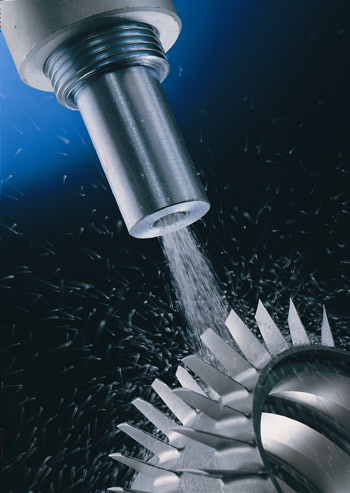Shot Peening Manufacturing Review
Shot Peening Manufacturing Review
Shot peening is a cold working process in which the surface of a part is blasted with small spheres made from ceramics or other material referred to as "shot". With each shot event striking the material is like a miniature hammer impacting the surface and creating a small indentation or dimple (spherical). The indentation or dimple yields the surface material fibers in tension. Below the material surface that was shot peened, the material is distorted hemispherically creating a cold-worked material highly stressed in compression. Overlapping dimples develop an even layer of metal in residual compressive stress. Generally, fatigue cracks will not initiate or propagate in a compressively stressed material area. Since nearly all fatigue and stress corrosion failures originate at the surface of a part from cyclic loading the compressive stresses created by shot peening provide an increase in fatigue life of the part. The maximum compressive residual stress produced at or under the surface of a part by shot peening is normally at least half the yield strength of the material being peened. Many materials will also increase in surface hardness due to the cold working effect of shot peening.
Benefits of shot peening are by the compressive stress and the cold working induced on the surface and sub-surface layers. Static compressive stresses are beneficial in increasing resistance to fatigue failures, corrosion fatigue, stress by corrosion cracking, fretting, galling and erosion caused by hydraulic cavitation. Benefits obtained due to cold working include work hardening, inter-granular corrosion resistance, surface texturing, and reducing or closing the porosity particularly on castings. Both compressive stresses and cold-worked effects are used in the application of shot peening in forming metal parts.
